Jujubes |
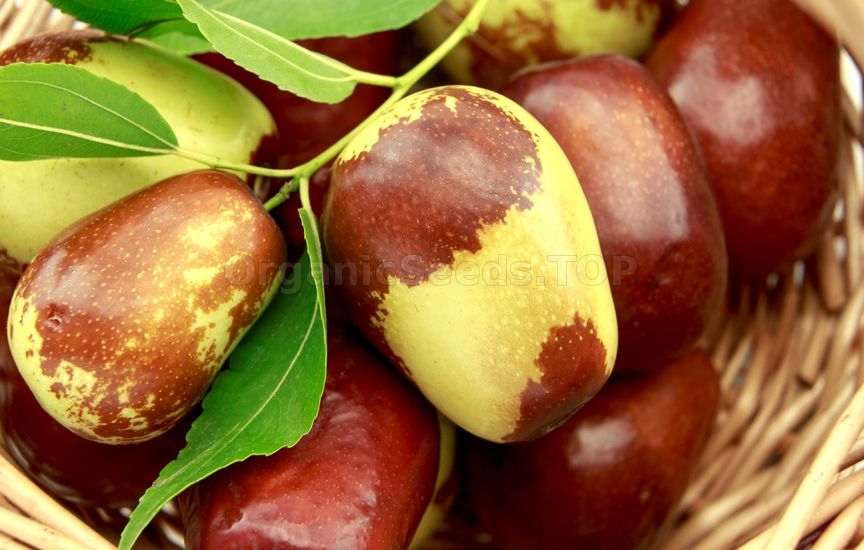 Jujube (Ziziphus jujuba) is one of the species which will handle salt and the vagaries of weather in southern Australia... better than olives. Known also as Chinese Date and Tsao, it is related to Indian Jujube (Ziziphus mauritiana) and is placed in the Rhamnaceae family. The Jujube originated in China where they have been cultivated for more than 4,000 years and where there are over 400 cultivars. The plants traveled beyond Asia centuries ago and today are grown to some extent in Russia, northern Africa, southern Europe, the Middle East and the southwestern United States.  Jujube seedlings, inferior to the Chinese cultivars, were introduced into Europe at the beginning of the Christian era and carried to the U.S. in 1837. It wasn't until 1908 that improved Chinese selections were introduced to America by the USDA. Seedlings were introduced to Western Australia from Asia before European occupation of the continent and have naturallised in the Kimberley area. Adaptation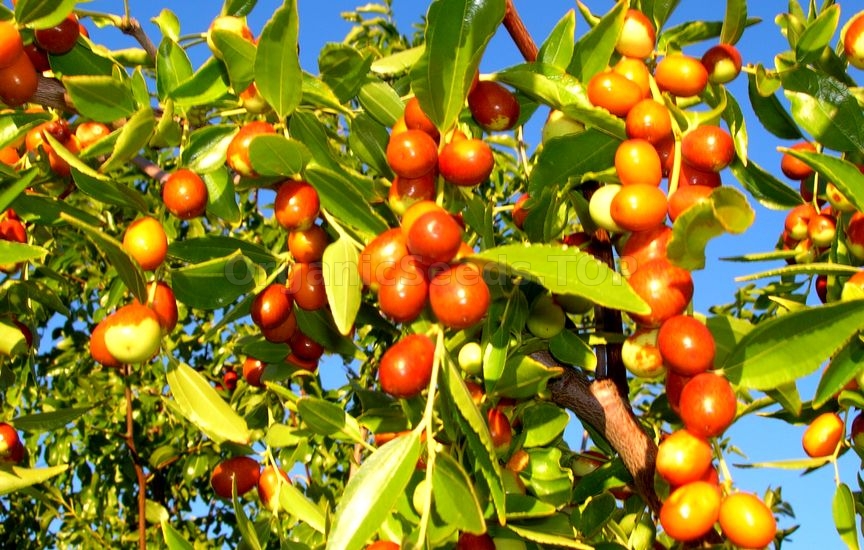 The jujube can withstand a wide range of temperatures; virtually no temperature seems to be too high in summertime. Winter dormancy allows it to withstand temperatures to about -28° F, yet it requires only a small amount of winter chill in order for it to set fruit. The plant revels in summer sun and heat, with the lack of either limiting fruit production more than winter cold.
Growth habit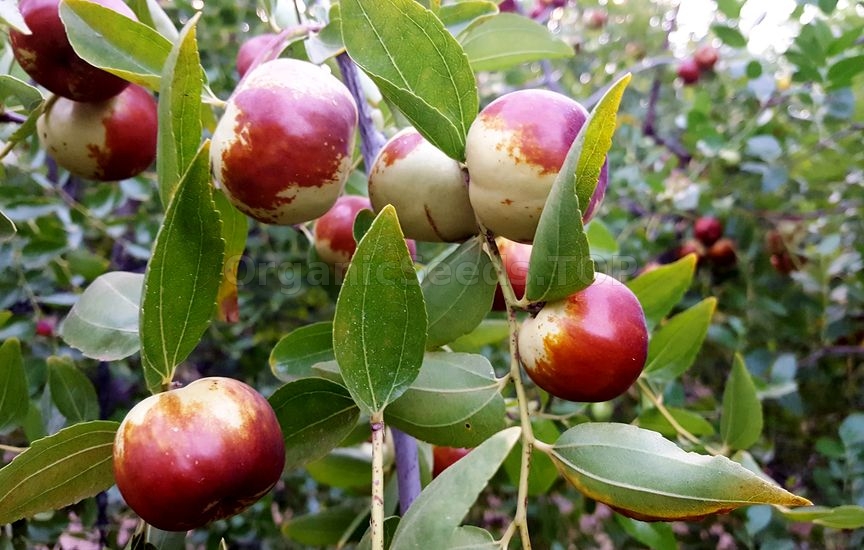 The jujube is a small, deciduous tree, growing to about 7-10m. The naturally drooping tree is graceful, ornamental and often thorny with branches growing in a zig-zag pattern. The wood is very hard and strong. Jujube cultivars vary in size and conformation, with some being very narrow in habit and others being more widespread.
One cultivar, the So, seems to be fairly dwarfing in habit. Plants send up suckers (often with intimidating spines) from their roots, and these suckers can appear many feet from the mother plant. Currently, these root suckers must be controlled by mowing or hoeing. Foliage & flowers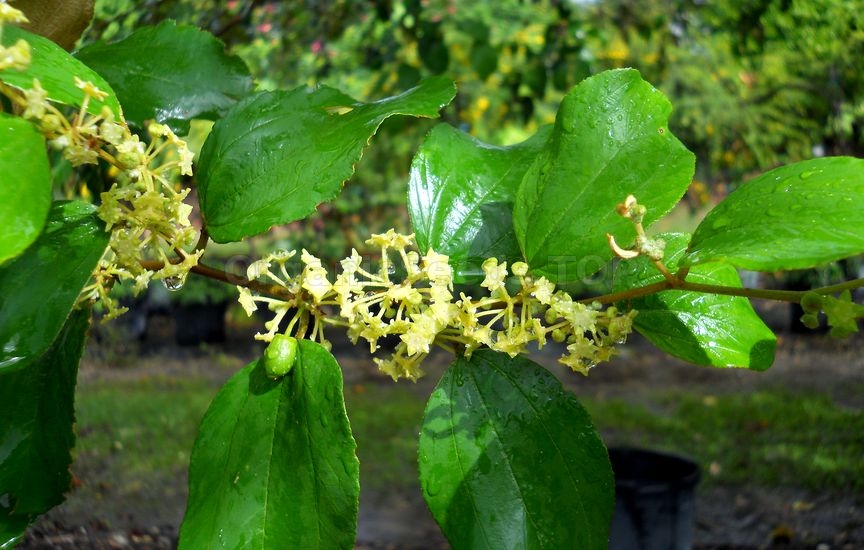 The small, ovate or oval leaves are 1-2 inches long and a shiny bright green. In the autumn, the leaves turn bright yellow before falling. There are usually two spines at the base of each leaf. Some spines may be hooked while others are long daggers. Virtually thornless cultivars are known. As the growing season commences, each node of a woody branch produces one to ten branchlets. Most of these are deciduous, falling from the plant in autumn.
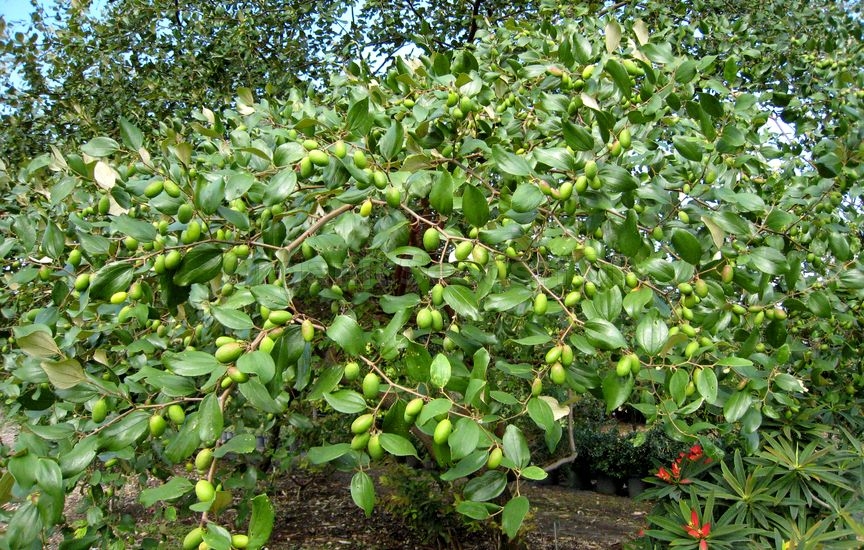 The inconspicuous, 1/5 inch diameter, white to greenish-yellow flowers are somewhat fragrant and produced in large numbers in the leaf axils on current season's growth. The flowering period extends over several months from late spring into summer. However, individual flowers are receptive to pollen for only one day or less. Pollination needs of the jujube are not clearly defined, but appear to be done by ants or other insects and possibly by the wind. Most jujube cultivars produce fruit without cross-pollination. The jujube is well protected from late spring frosts by delayed budding until all chance of cold weather has passed. Fruit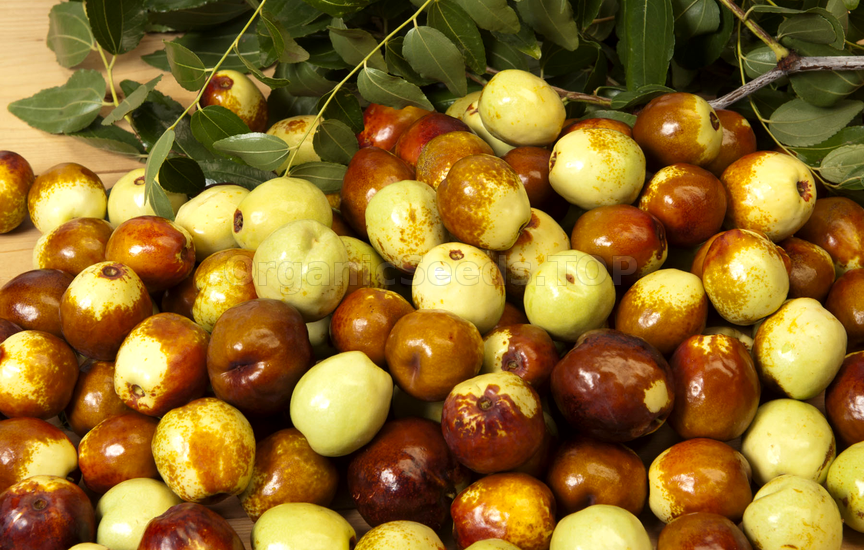 The fruit is a drupe, varying from round to elongate and from cherry-size to plum-size depending on cultivar. It has a thin, edible skin surrounding whitish flesh of sweet, agreeable flavor. The single hard stone contains two seeds. The immature fruit is green in color, but as it ripens it goes through a yellow-green stage with mahogany-colored spots appearing on the skin as thefruit ripens further. The fully mature fruit is entirely red-brown. Shortly after becoming fully red, the fruit begins to soften and wrinkle.
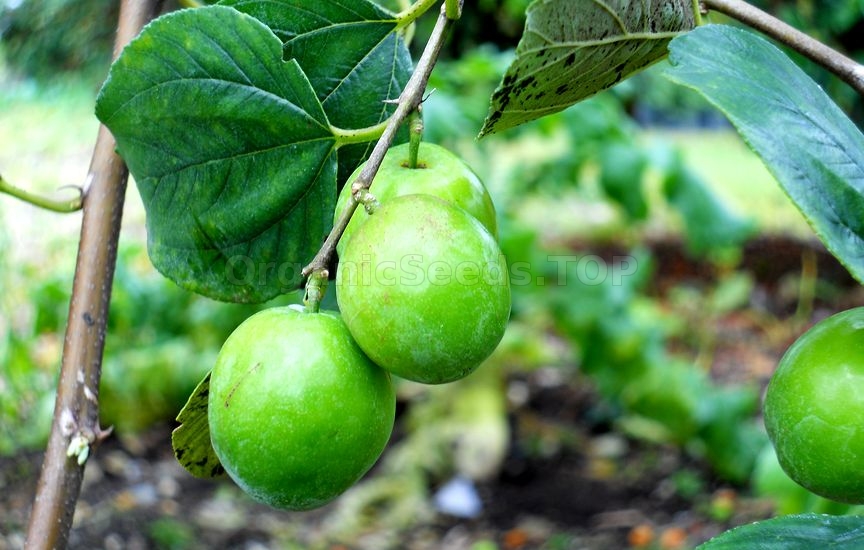 The fruit can be eaten after it becomes wrinkled, but many people prefer them during the interval between the yellow-greenstage and the full red stage. At this stage the flesh is crisp and sweet, reminiscent of an apple. Under dry conditions jujubes lose moisture, shrivel and become very sweet (20% natural sugars). Growing jujubes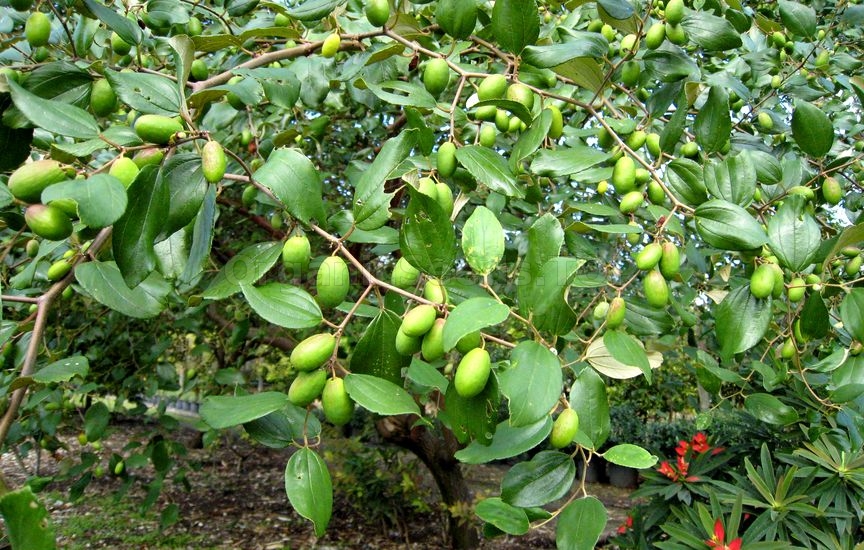 Jujubes should be given a warm, sunny location, but are otherwise relatively undemanding. Given adequate heat and sun, the trees will thrive without any special care. They should not be planted in the shade of other trees.
Jujubes tolerate many types of soils, but prefer a sandy, well-drained soils and do less well in heavy, poorly drained soil.They are able to grow in soils with high salinity or high alkalinity. One of the outstanding qualities of the jujube tree are its tolerance of drought conditions. Regular watering, though, is important to assure a quality fruit crop. Fertilizer requirements have not been studied, but jujubes appear to do well with little or no fertilization. Light broadcast applications of a balanced fertilizer during the growing season will speed growth. Pruning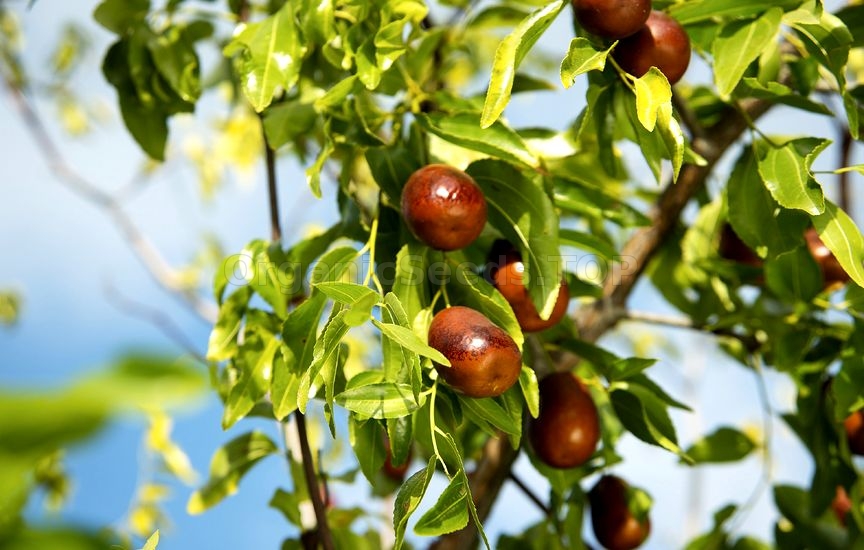 Unpruned trees produce as well as trees that have been pruned. Extensive winter pruning, however, will keep the plants in better health and produce more easily obtainable fruit.
Propagation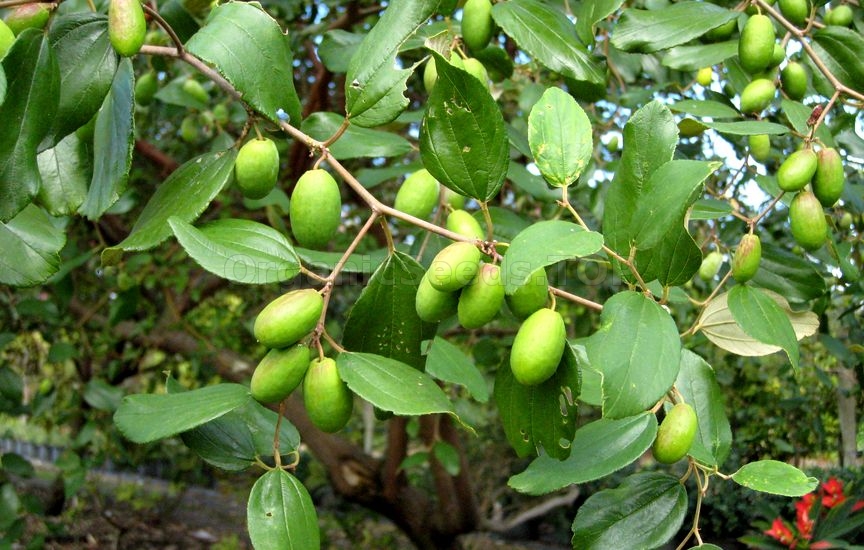 Conventionally Chinese cultivars are grafted or budded onto a rootstock during spring using cold-stored scion wood. Traditional rootstocks generally produce many suckers. Jujubes also can be propagated from seed, although they do not come true to the mother tree. Most jujube cultivars produce fruit without cross-pollination, but seeds from such self-pollination are often not viable (such as from the Li or Lang cultivars). A single seed is inside the fruit and both the nature of the seed and the size and colour of the fruit give rise to the common name, Chinese Date.
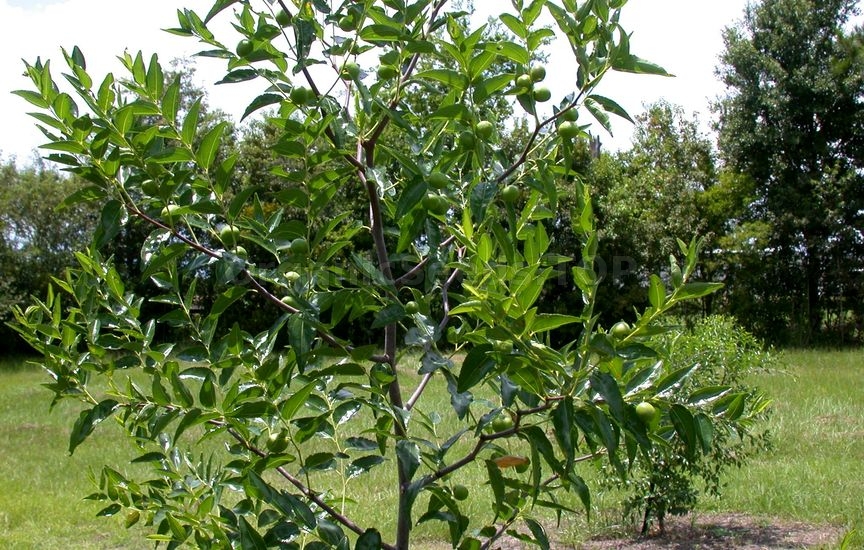 Jujubes should be set out 4-5 metres apart since they require high light intensities for good production. Upon setting out new, bare root trees, top the plant to 1 metre and remove all side branches to leave only a whip. New, stronger branches will emerge from each bud just below the point where the old branches were pruned. Harvest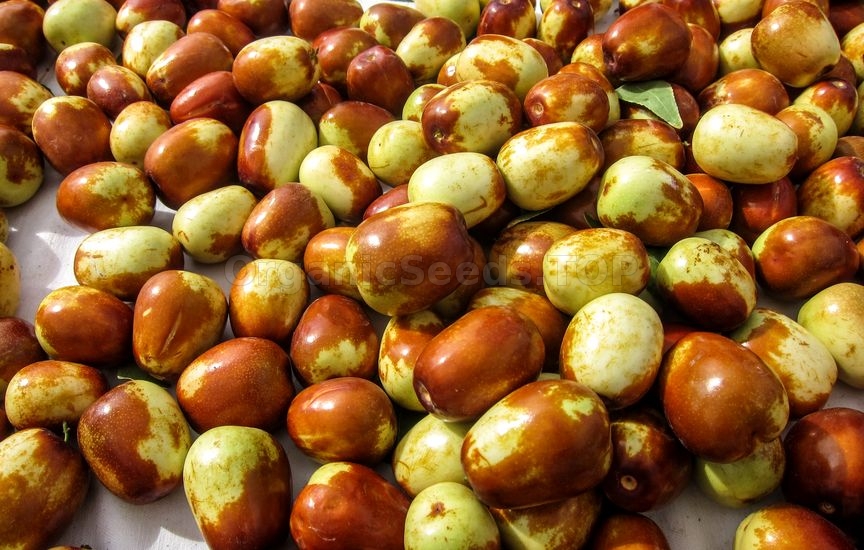 The crop ripens non-simultaneously, and fruit can be picked for several weeks from a single tree. If picked green, jujubes will not ripen. Ripe fruits may be stored at room temperature for about a week.The fruit may be eaten fresh, dried or candied. Fresh fruit is much prized by certain cultures and is easily sold in Chinese, Korean, Vietnamese, and Indian markets. The texture and flavor more closely resemble that of an apple than a date. Tree dried fruit stores indefinitely and may have good marketing potential as it dries on the tree without the use of a sulphur preservative. You may need:Organic Jujube Seeds (Ziziphus Jujuba) |
|
|
